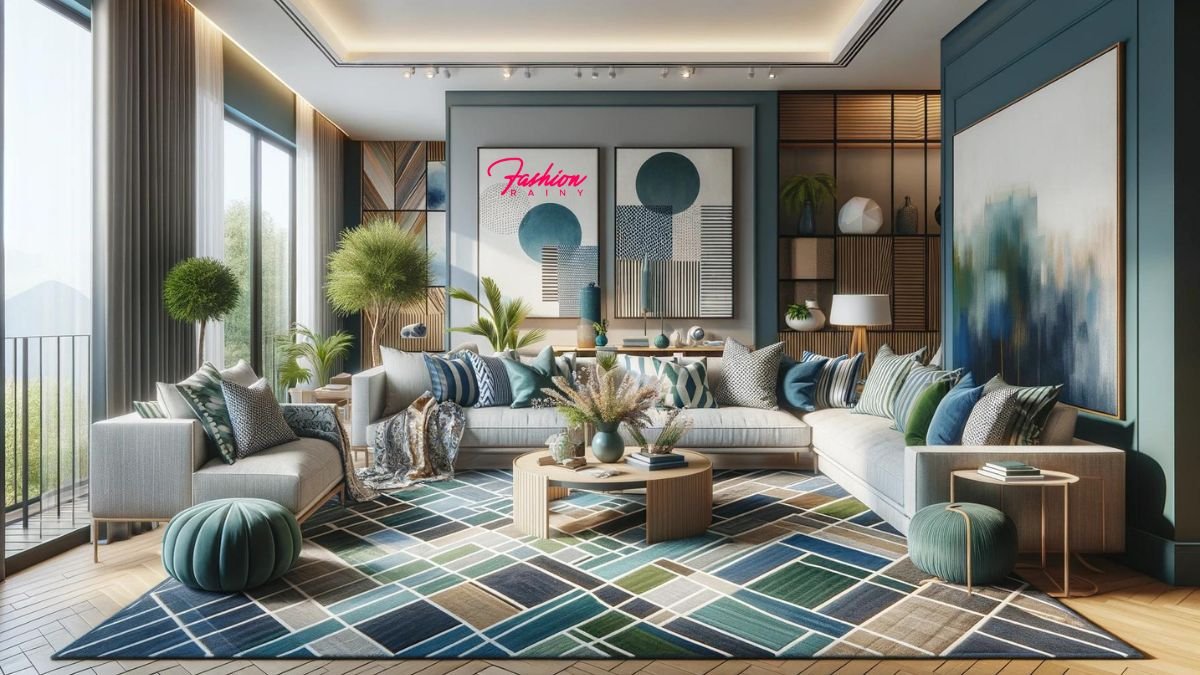Mixing Patterns in Interior Design: Tips and Tricks for a Cohesive Look
Mixing Patterns in Interior Design: Tips and Tricks for a Cohesive Look

In the ever-evolving world of interior design, mixing patterns has emerged as a popular trend, offering a fresh and dynamic approach to decorating spaces. Combining different patterns can infuse a room with personality, depth, and visual interest. However, achieving a harmonious look requires a keen eye and an understanding of some key principles. Here’s how you can master the art of mixing patterns in interior design.
Understanding the Basics
Before diving into the world of patterns, it’s essential to grasp the basics. Patterns come in various forms, such as stripes, florals, geometrics, and abstract designs. Each pattern has its own character and can evoke different feelings. The goal is to create a balanced and cohesive look by blending these diverse elements thoughtfully.
Start with a Color Palette
The foundation of successful pattern mixing lies in the color palette. Choose a color scheme that will guide your pattern selections. This could be a monochromatic palette, where variations of a single color are used, or a complementary palette, where contrasting colors are combined. Keeping the colors cohesive helps ensure that the patterns will work well together.
Scale and Proportion
When mixing patterns in interior design, scale and proportion play a crucial role. Combine patterns of different scales to create visual interest without overwhelming the space. For instance, pair a large floral print with a small geometric pattern. This contrast in scale allows each pattern to stand out and prevents them from competing for attention.
Balance and Distribution
Balance is key to interior design mixing patterns effectively. Distribute patterns evenly throughout the room to create a sense of harmony. If you have a bold, patterned sofa, balance it with patterned throw pillows, rugs, or curtains. Avoid clustering patterns in one area, as this can create visual chaos.
Mix Different Pattern Types
Make sure to blend various kinds of examples. Stripes, florals, checks, and abstracts can all work together if they share a common color palette and vary in scale. This eclectic approach can result in a vibrant and inviting space that reflects your personal style.
Incorporate Solids
Incorporating solid colors is essential when mixing patterns. Solids provide a resting place for the eyes and help to break up the visual complexity. Use solid-colored furniture, walls, or larger décor pieces to ground the patterns and create a cohesive look.
Layering Patterns
Layering is another effective technique in pattern mixing. Start with a base layer, such as a patterned rug or wallpaper, and build upon it with patterned furniture and accessories. This layered approach adds depth and dimension to the space, making it feel more dynamic and thoughtfully designed.
Stay True to Your Style
While it’s great to follow trends, it’s crucial to stay true to your personal style. Mixing patterns in interior design should reflect your taste and preferences. Whether you prefer a bold, eclectic look or a more subtle and sophisticated vibe, let your personality shine through in your pattern choices.
Mixing Patterns in Interior Design: Current Trends
Several current trends can inspire your pattern-mixing journey:
- Maximalism: Embrace the “more is more” philosophy by combining multiple bold patterns in a single space. Think vibrant florals with striking geometrics.
- Global Influence: Incorporate patterns inspired by different cultures, such as Moroccan tiles, Indian block prints, or Japanese ikat designs, to add a worldly touch to your décor.
- Nature-Inspired Patterns: Bring the outdoors in with patterns inspired by nature, such as botanical prints, animal motifs, and earthy textures.
- Retro Revival: Vintage patterns from the ’60s and ’70s are making a comeback. Think bold florals, psychedelic swirls, and funky geometric shapes.
Mixing Patterns in Living Room Spaces
When it comes to mixing patterns in living room, consider the main elements such as sofas, rugs, curtains, and throw pillows. Start with a large statement piece, like a patterned sofa, and build around it with smaller patterned accessories. Ensure that the colors and scales complement each other to maintain balance and avoid a cluttered look.
See also: Reviving Tradition in Lawn Care: The Eco-Friendly Revolution of Mexican Lawnmowers
Conclusion
Interior design mixing patterns is a creative and exciting way to add character to your home. By understanding the basics, selecting a cohesive color palette, balancing scales, and staying true to your style, you can create a harmonious and visually appealing space. Whether you’re a fan of bold maximalism or prefer a more understated approach, there’s a pattern-mixing strategy that’s perfect for you. Embrace the trend and let your home reflect your unique personality and taste.






3 Comments